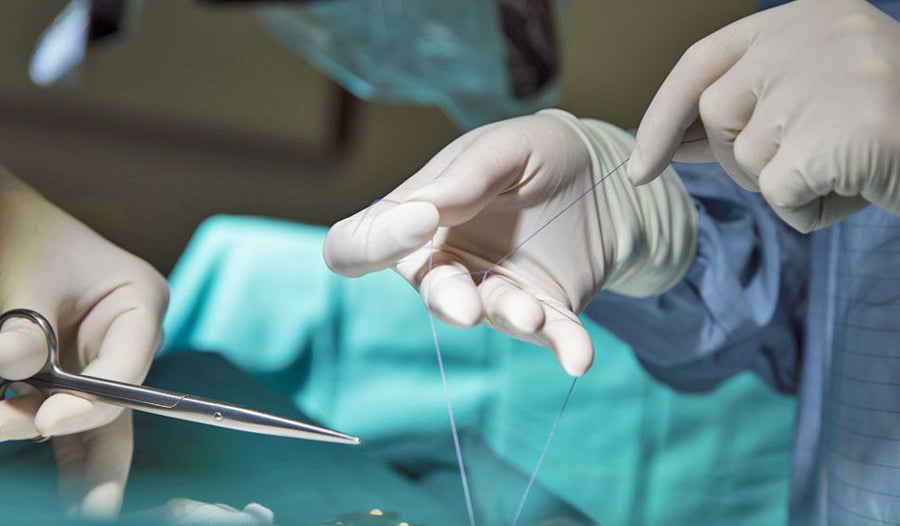
A Body of Work: The Surgeon's Craft
Our latest 'Long Thread' is on the theme of mending (and in more ways than one), to coincide with the release of our latest issue, Issue 102 Mend.

When Homo sapiens first began to migrate across the globe many millennia ago, a bone needle and sinew thread were key to survival. With these simple tools, they could stitch animal hides to make clothing warm enough to protect themselves against extreme weather conditions. Those same implements have been used over centuries, for mending as well as making – for stitching human tissue as well as textiles. Today, a surgeon sews by holding a sterilised stainless-steel needle between forceps, creating delicate surgical knots to keep the body safe from infection and blood loss. Watch a group of weavers repairing a 16th century carpet, then a surgeon at work in the operating theatre surrounded by assistants and you’ll find they share the same ethos of teamwork and attention to detail, with the resultant well-stitched wound as pleasing to the eye as a piece of artisanal craftwork. To achieve a near-invisible mend in both activities requires a dexterous technique with the correct tension.
 Image: Conservators working on a tapestry at the National Trust
Image: Conservators working on a tapestry at the National Trust
Professor Roger Kneebone of Imperial College, London, has often written of the tactile skills required of surgeons: ‘Medicine combines science, craft, and art. Yet often we overlook the art.’ He emphasises the combination of skill and sensitivity that comes from practising the wordless language of touch: ‘Touch is more like vision...It is no accident that clinicians talk of teaching their fingers to see.’ He laments the bias in schools towards academic subjects at the expense of craft, arguing that both are important in surgery: ‘Science and medicine are no more purely cognitive than the arts. All depend on performance, technical skill, observation, dexterity and the ability to work under pressure’.
Just as an embroiderer selects from the contents of a needlework pouch, so the surgeon has recourse to a kit of threads that are synthetic or natural, braided or monofilament. For absorbable sutures, polydioxanone filaments are easy to handle and strong, while for non-absorbable, a natural thread like silk may be used, although synthetic alternatives such as polyester fibres tend to be preferred as they’re more consistent and less likely to lead to reactions.
 Image: An embroidered surgical implant
Image: An embroidered surgical implant
From the development of mechanised yarn spinning and loom weaving during the Industrial Revolution that made the mass production of textiles possible to the use of computer-based embroidery design programmes that result in rolls of patterned cloth in minutes, technology has played its part in fashion fabrics and surgery.
Ellis Developments Ltd, a technical textile company based in Nottingham, manufactures woven ligaments and embroidered implants for the human body. ‘When I observed an operation on a shoulder’s rotating cuff and the surgeon was dealing with 23 ends of suture thread...’ says Julian Ellis, the company’s founder. Thread tangling was a common problem and so Ellis developed embroidered implants to provide a lacy scaffolding for cells to grow through, with each implant customised to suit the body that needs it.
Climate activist Greta Thunberg is embroidering while attending classes online. ‘I concentrate better when I do something at the same time,’ she said recently. Who knows, perhaps one day, the technology of needle and thread will not only repair clothes and bodies but also be harnessed to repair the world’s fragile environment.
Written by Deborah Nash
Find out more about Issue 102 Mend and how to purchase by visiting our subscriptions page.
